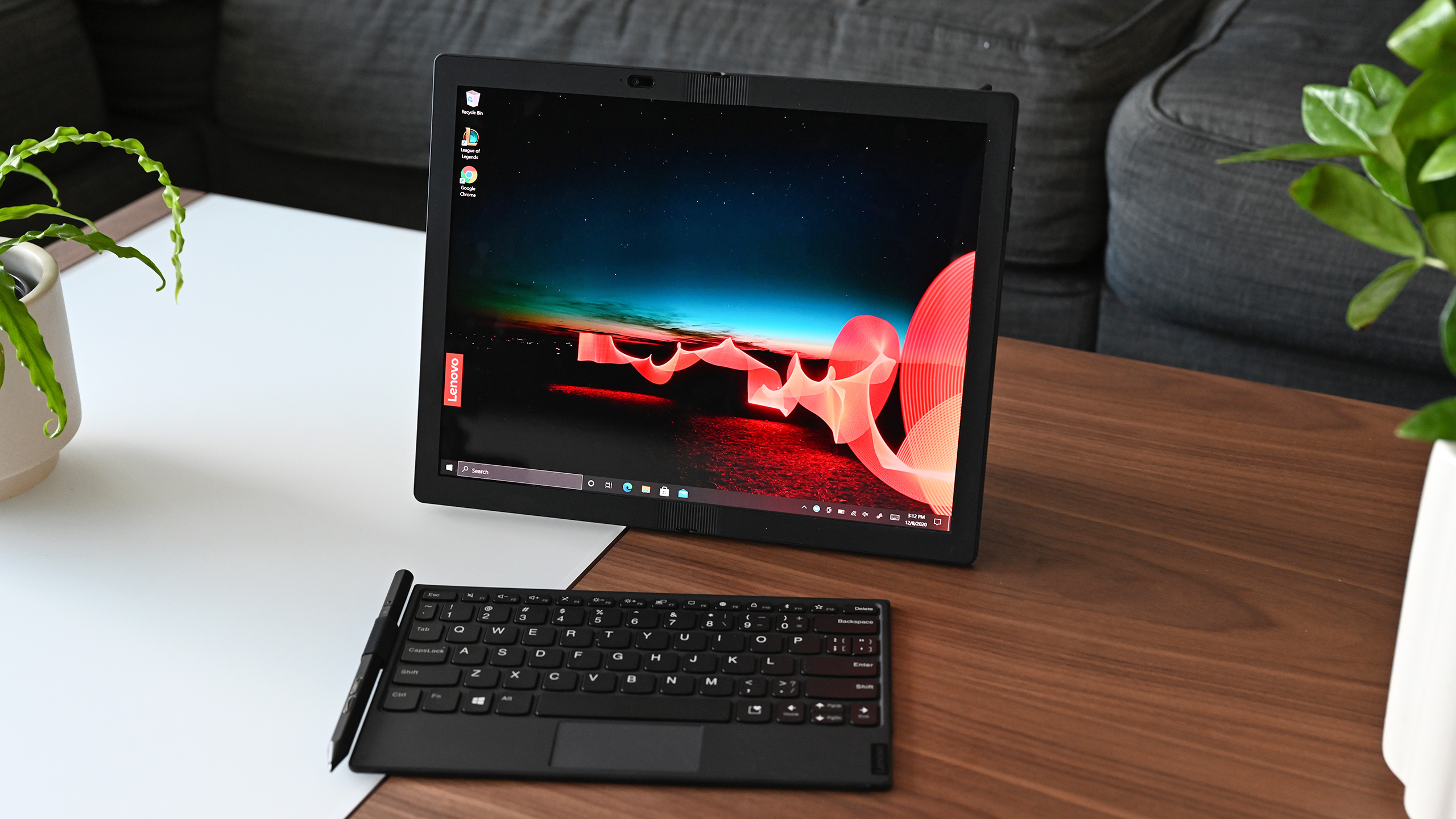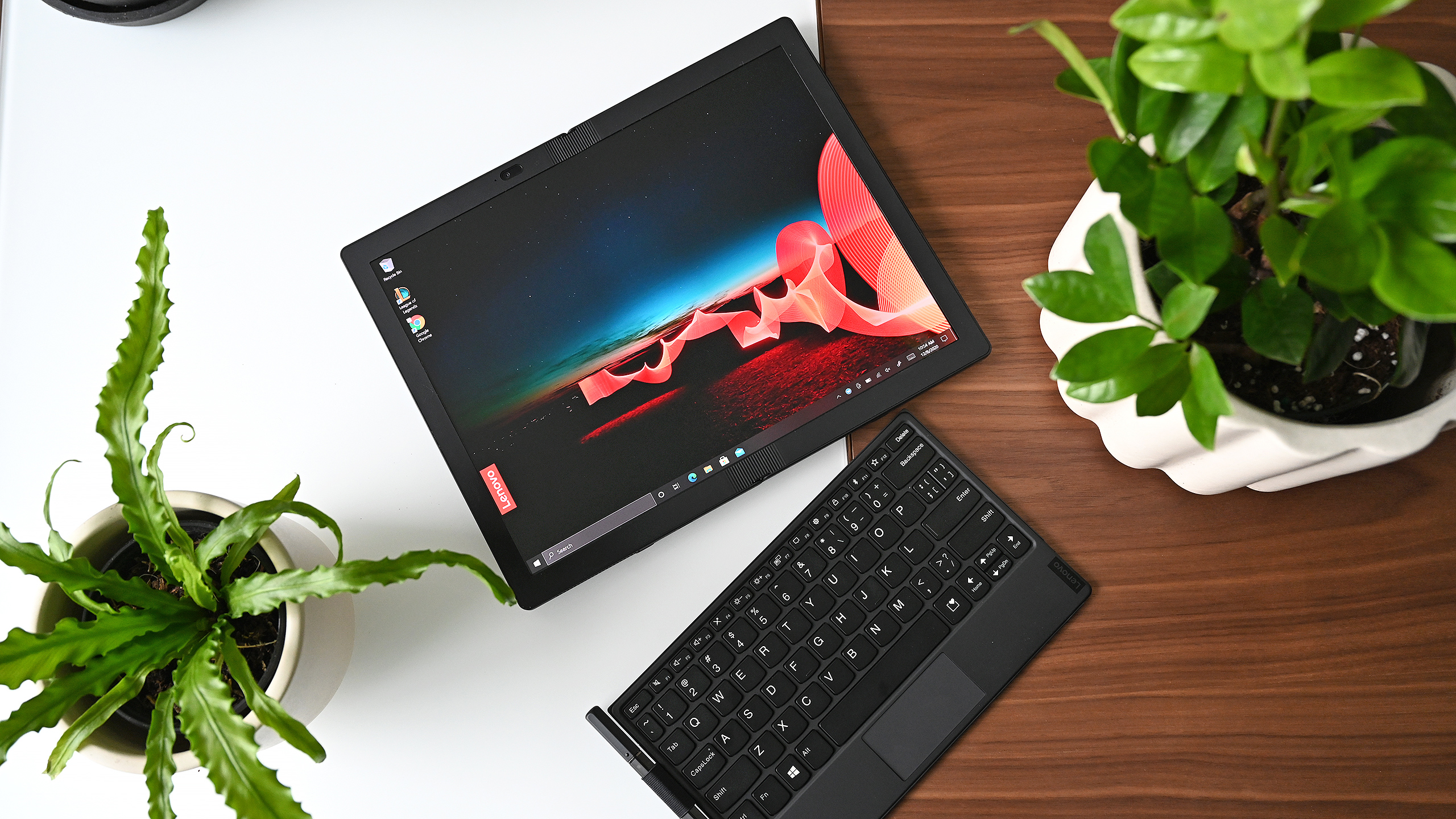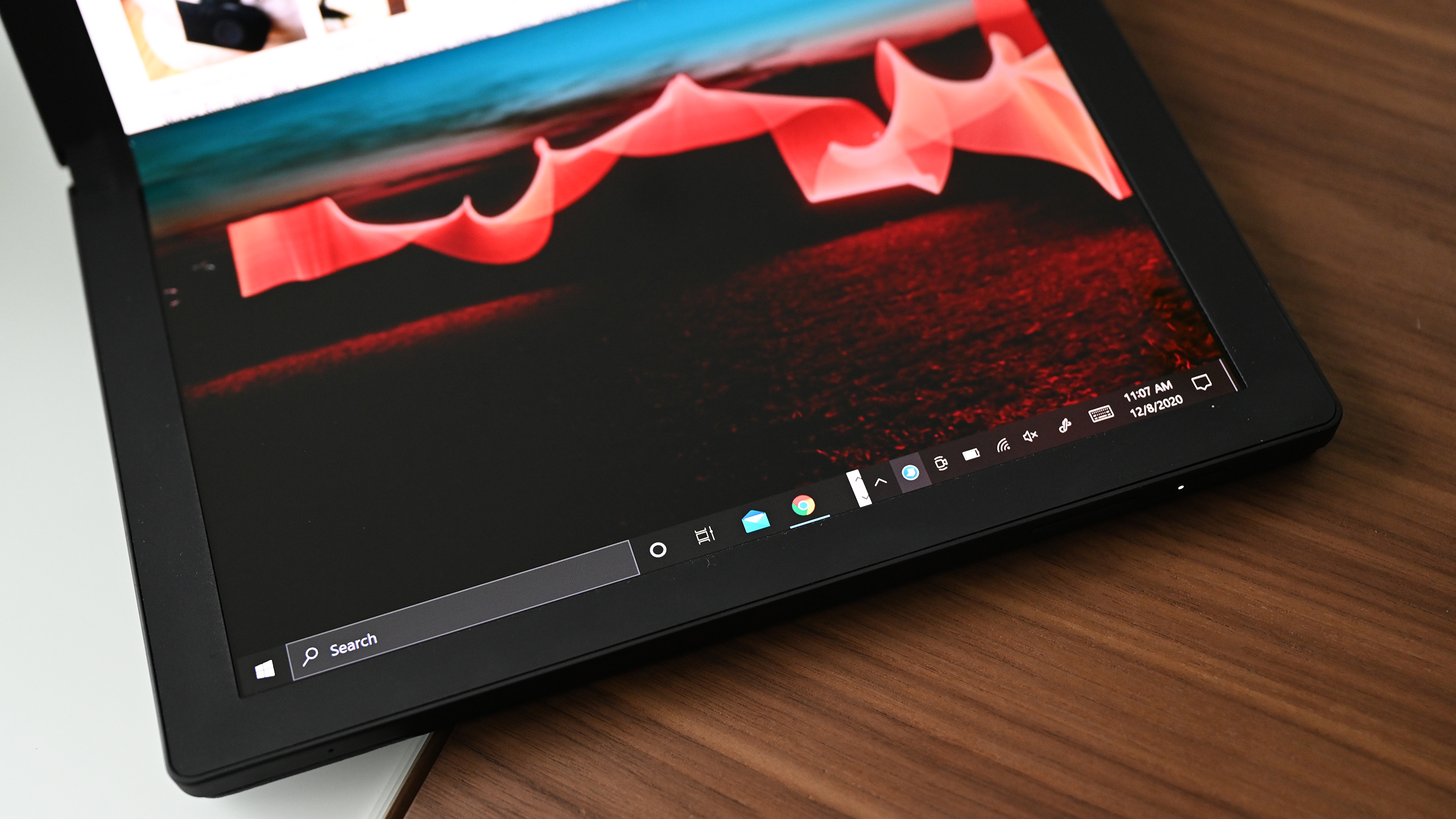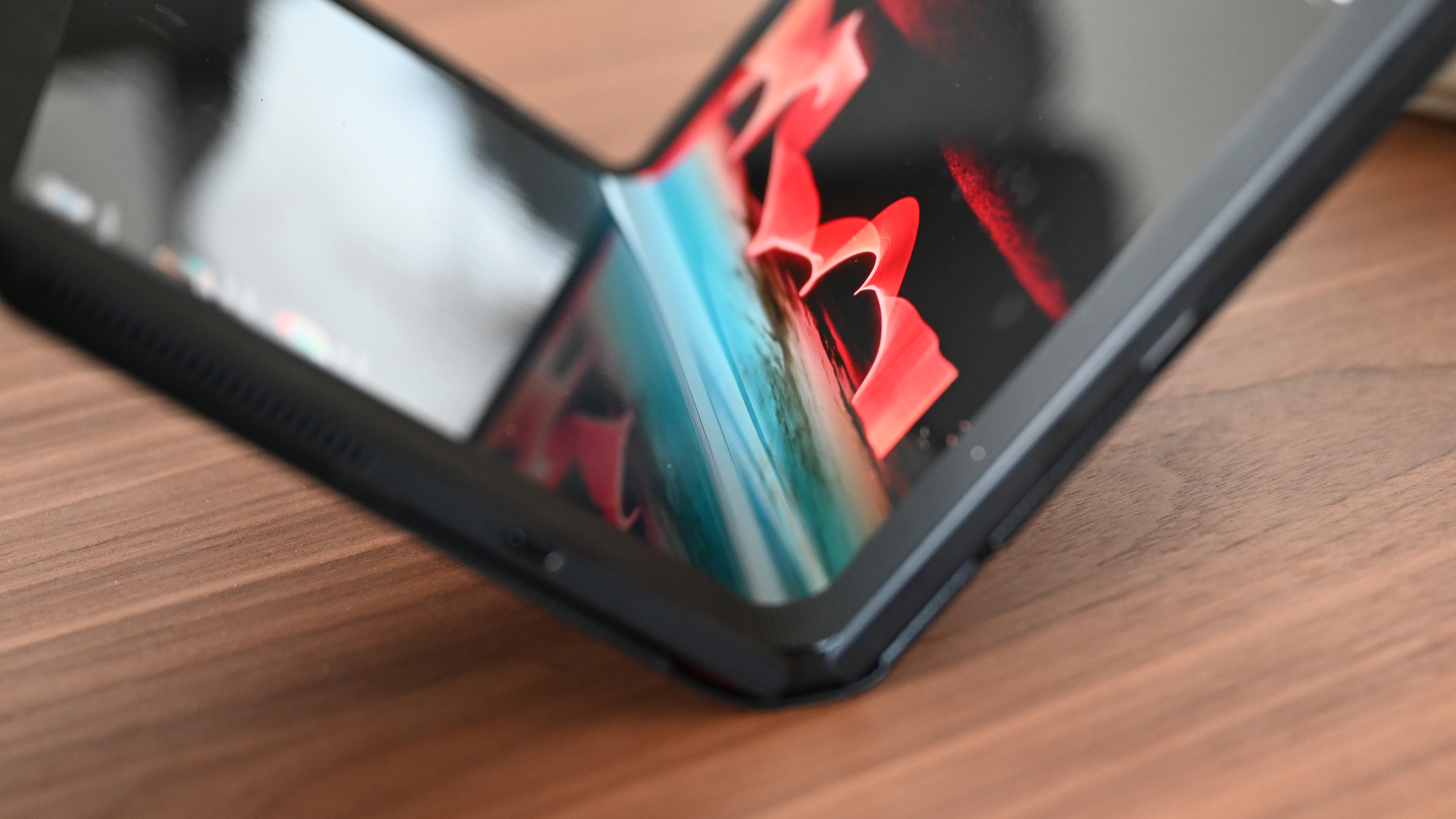Right now the laptop industry is at a crossroads. Traditional clamshells aren’t going anywhere anytime soon (for good reason), and over the last decade convertible machines like Microsoft’s Surfaces, Apple’s iPad Pros, Lenovo’s Yogas, and others have helped address the needs of people who need flexible computers that are good on the road. But as we’ve seen with smartphones like the Galaxy Z Fold and Z Fold2, the arrival of flexible screen technology is paving the way for a new breed of devices, which brings us to this: the Lenovo ThinkPad X1 Fold.
The ThinkPad X1 Fold is the first laptop in the world featuring a flexible OLED display, and by putting that tech into something you can actually buy, Lenovo has presented us with a vision — but not necessarily the vision — of our future. Starting from here, with all of the X1 Fold’s flaws, advancements, and big ideas, what this system really represents is a point of divergence from the clamshells and convertibles that came before. The ThinkPad X1 is standing at a crossroads, and for both good and bad, it’s stepping off in a bold new direction.

Lenovo ThinkPad X1 Fold
What is it?
The first consumer laptop with a flexible OLED display
Price
Starts at $3,799 (as reviewed)
Like
Very innovative, built-in kickstand, multi-mode design, stylus support, rich flexible OLED display, neat magnetic keyboard, surprisingly durable
Don't Like
OS integration feels clunky, thick, very expensive, kind of buggy, sometimes wonky BT keyboard connection, screen brightness is a bit low, no headphone jack
But right off the bat, one funny thing about the X1 Fold is that unlike with most phones today, practically all modern laptops are foldables, even if they fold a bit differently than Lenovo’s latest innovation. That’s because, where most laptops feature a display up top balanced out by a physical keyboard and touchpad down below, and a hinge in between, the X1 Fold is all screen.
At 278 nits of peak brightness, the X1 Fold’s 13.3-inch flexible screen is a bit dim compared to most laptops, but what it lacks in luminance, it generally makes up for with the deep blacks and rich colours people have come to expect from an OLED panel, flexible or otherwise. However, where the X1 Fold really separates itself is the way Lenovo has designed the laptop around the screen to support a wide variety of functions.
Around the outside of the display there are some seriously big and thick bezels to help give the X1 Fold rigidity, with a small cutout for a 5-MP webcam (plus a bonus IR camera) and two ribbed plastic sections covering its hinges. While it looks more than a little clunky, there’s actually some sneaky engineering going on, as the X1 was designed so that the flexible screen can shift slightly when opened and closed, allowing the screen to bend without excess pressure or developing a crease like you get on Samsung’s foldable phones.
Meanwhile, around back, Lenovo added a leather folio that wraps around the system and keeps things protected without straining flexibility. There’s even a built-in kickstand that lets you prop up the X1 Fold like it’s a portable all-in-one PC. And if that wasn’t enough, Lenovo even includes a rather small but serviceable magnetic Bluetooth keyboard that fits between the two halves of the screen when closed and wirelessly charges itself. (Note: The BT keyboard also has a micro-USB port for charging, which seems kind of silly when the X1 Fold sports USB-C ports on its body. But since I never ran into a situation where the keyboard ran out of battery before the X1 itself did, I’m largely OK with what would otherwise be an annoying mismatch.)

Lenovo even considered the multiple ways you can use the X1 Fold and put its two USB 3.2 Type-C ports on perpendicular edges of the system, so no matter which way you’re holding the X1 Fold — or if it’s sitting on a table — you’ll always have at least one, and probably both ports easily accessible. But perhaps one of the most impressive things about the X1 Fold is that unlike the Samsung’s Galaxy Z Fold and Z Fold2, which are delicate flowers, Lenovo claims the X1 Fold has passed the same battery of mil-spec inspired tests other ThinkPads go through. The X1 Fold even supports handwriting input via its included stylus, with Lenovo also managing to cram in Wi-Fi 6, surprisingly decent Dolby Atmos audio, and optional 5G connectivity if you want it.
All told, the X1 Fold is a real triple-decker turkey club of a laptop. When it’s folded up, it’s more than an inch thick, and because all of its weight is concentrated in a much more compact design than a typical 13-inch laptop, it feels denser and heavier than it actually is. With its leather back, the X1 Fold feels more like one of those zippable day planners that lawyers use, except this one is filled with computer components instead of paper.

Another note about the X1 Fold’s design is that while I can understand its somewhat thick and clunky-feeling layout, there are a couple hardware choices I can’t really get down with. The first is a lack of a headphone jack. Yes, at this point a lot of smartphones have axed their 3.5mm ports completely, but when it comes to laptops, it’s quite sad that even on a compact system like this there’s nowhere to plug in wired audio.
My other gripe is with the X1 Fold’s built-in fans, which seem borne more out of necessity than desire on Lenovo’s part. For a system like this, it really seems like the X1 Fold would have really benefited from a fanless design, allowing Lenovo to streamline its body even more and cut down on the hassle of potential durability concern of having extra moving parts. Every time I hear the X1 Fold’s fans spin up, I just have to chuckle. Unfortunately, at least on the Windows side of things, I don’t think there’s a CPU cool enough to not need a fan and still deliver the kind of performance you’d expect from a $3,799 laptop.
While the design of the X1 Fold is one thing, actually using it is something else altogether. At times, the ThinkPad X1 Fold feels like one of the most futuristic computers I’ve ever used. But oftentimes its software feels anything but futuristic.

When I first opened it up into “laptop mode” but still had a continuous screen running from top to bottom, I was kind of stunned. By using Lenovo’s Mode Switcher, you can easily tell the X1 Fold how you want to divvy up that flexible display, letting you choose between full and split screen with just a couple taps. You can have video playing up top while scrolling social media down below, where a boring keyboard would normally be. And if you need to type something, you can either use one of several on-screen touch-based keyboards, or you can plop down that magnetic keyboard and let the X1 Fold automatically detect its presence and transform itself into a mini traditional laptop.
It’s kind of cramped, and with the BT keyboard covering up the lower half of the display, you’re using what is effectively a very expensive 10-inch clamshell. Still, it’s great for tight spaces.
And then, on a whim, you can pick the thing up, unfold that screen, and instantly have a tablet in your hands — or, even more importantly, you can pop out that kickstand, toss the BT keyboard in front, and now you have a portable all-in-one-style workstation at your command. If the ThinkPad X1 Fold were to be compared to any animal…it’d be a Transformer like Blitzwing or Astrotrain. The X1 Fold isn’t just a 2-in-1, it’s a 3-in-1 because it’s a laptop, a tablet, a mini AIO, and more, all smashed together.
Unfortunately, as much as I like transforming the X1 Fold into different modes, the other reality of Lenovo’s bold take on the future of computing is that the software supporting the experience is often awkward and buggy (and sometimes both at once), which results in a less-than-stellar overall experience.

For example, numerous times when I rotated the display, the X1 Fold’s screen would get stuck in portrait orientation, even when the display was actually in landscape mode (or vice-versa), resulting in hilariously huge black bars around the edge of the content. And in some situations, like when I was playing a game of Teamfight Tactics in League of Legends, rotating the X1 Fold caused the game to completely crash, which feels really bad for a game that’s very much meant to be played while mobile.
Other times, Lenovo’s Mode Switcher just didn’t work, or got stuck in the current setting and would adjust when I tried to go back to full-screen mode. And initially, I had to pair the X1 Fold’s BT keyboard with the system multiple times before it eventually stuck. But the biggest issue is that even with four different keyboards to choose from, none of them truly felt right. And this is coming from someone who doesn’t actually hate typing on a touchscreen.
Take the condensed keyboard, which sacrifices important keys like Esc, Shift, and Tab in exchange for larger overall keys and a smartphone-like uppercase toggle. While those bigger keys do make it slightly easier to type on a virtual touch-based keyboard, because you’re forced to hit the &123 menu anytime you want to hit a common symbol like @ or $, you lose a lot of the typing speed you would get from a regular laptop.
Meanwhile, the full uncondensed virtual keyboard doesn’t span the full width of the display when in laptop mode. The keys are too small to accurately touchtype on. The X1 Fold really needs to utilise all of its display to be truly effective. And speaking of things that need more room, because Lenovo has to include a shortcut to the virtual keyboard and another for the Mode Switcher button, when combined with the regular assortment of icons in the Windows 10 system tray, the Task Bar has almost no room to display apps. It’s super frustrating. In an ideal world, there wouldn’t even be a Mode Switcher app; it would be built into the OS itself and controlled via gestures.

In a lot of ways, I feel like the inclusion of a physical keyboard really prevented Lenovo from fully committing to the touchscreen keyboard experience, which is the only way I can really see a device like this working to its fullest. People who won’t compromise on the physical keyboard will never enjoy something like the X1 Fold, and that’s OK, because this thing wasn’t made with them in mind. But even more than that, Windows 10 just isn’t meant to support hardware like this.
Windows 10X, which is designed for devices with dual screens and flexible displays, was supposed to be out by now. But due to covid-19 and some other issues, it’s been delayed until next year. So the OS Lenovo almost certainly intended for the X1 Fold simply wasn’t available. But instead of cancelling the whole product, it seems like Lenovo scrambled, came up with hasty patches, and forged on anyway. It shows. The X1 Fold is a futuristic mobile device without the OS it needs to fully support and take advantage of its design and innovation.

The other hard realisation regarding the X1 Fold is one of value. While its Intel Core i5-L16G7 processor, 8 GB of RAM, and 1 TB PCIe SSD are reasonably speedy, compared to a standard laptop with similar specs (including Lenovo’s other ThinkPads), the X1 Fold costs $1,000 to $1,500 more. That’s a huge premium to fork over for a forward-thinking device with awkward software.
And what’s more, unlike the original Galaxy Z Fold, which offered more RAM, more storage, and way longer battery life than regular phones, the X1 Fold’s longevity is very average, lasting only seven hours and 28 minutes on our video rundown test. But perhaps the most damning part about the X1 Fold is that compared to the Samsung Galaxy Z Fold and Z Fold 2, the X1 Fold simply isn’t as good of a multitasker.
Don’t get me wrong; the X1 Fold is way more interesting than a typical 2-in-1, and more compact too. But when it comes to productivity, what it trades in speed due to its cramped keyboard and the tiny touchpad on its Bluetooth keyboard, the X1 Fold doesn’t really make up for in flexibility. I have to admit that during my week with this thing, I often found myself staring at the X1 Fold and thinking of all the possibilities rather than actually wanting to pick it up and use it.

So what we really have here with the ThinkPad X1 Fold is a laptop with an innovative (though somewhat unpolished) design, with mediocre battery life, buggy software, and a price tag that’s nearly two times more than it should be. That sounds like a bad deal, and it is. And yet, I’m not mad. That’s because we need to remember that the X1 Fold is the definition of first-gen tech.
Lenovo is trying something wild and adventurous, and it’s hard to be really ambitious if you’re not allowed to make mistakes. Don’t get me wrong, if you’re on a budget or need a primary work machine, the X1 Fold isn’t for you. This thing is for hardcore enthusiasts who want to check out bleeding-edge tech. The X1 Fold’s real value is giving us a glimpse at where the laptop market might be heading tomorrow as it embarks from the crossroads it’s standing at today.
README
- In a lot of ways, the ThinkPad X1 Fold and flexible OLED display is even more experimental than the first Galaxy Fold, so unless you’re a die-hard cutting-edge gadget enthusiast, it’s probably a pass for now.
- Reports suggest the ThinkPad X1 Fold was originally supposed to run Windows 10X, and it really shows.
- Unlike other flexible screen devices, the X1 Fold should be somewhat durable, passing the same set of mil-spec testing other ThinkPads go through. It even has stylus support too.
- For those not ready to make the jump to typing on a touchscreen, the X1 Fold comes with a nifty little Bluetooth keyboard with magnetic charging that fits inside the X1 Fold when closed.
- Compared to a traditional laptop with similar specs, the X1 Fold costs $1,000 to $1,500 more, which is a big ask.
